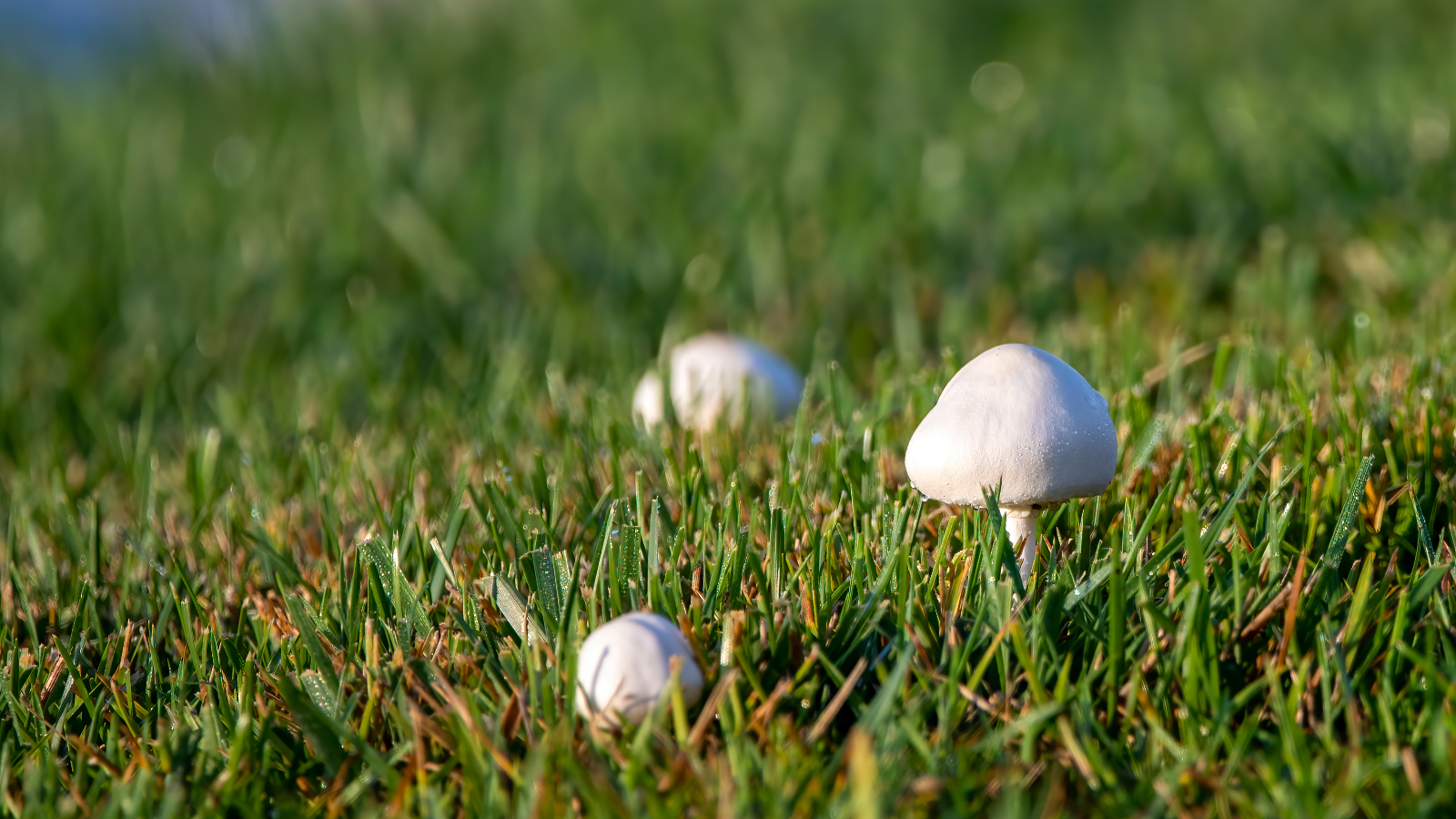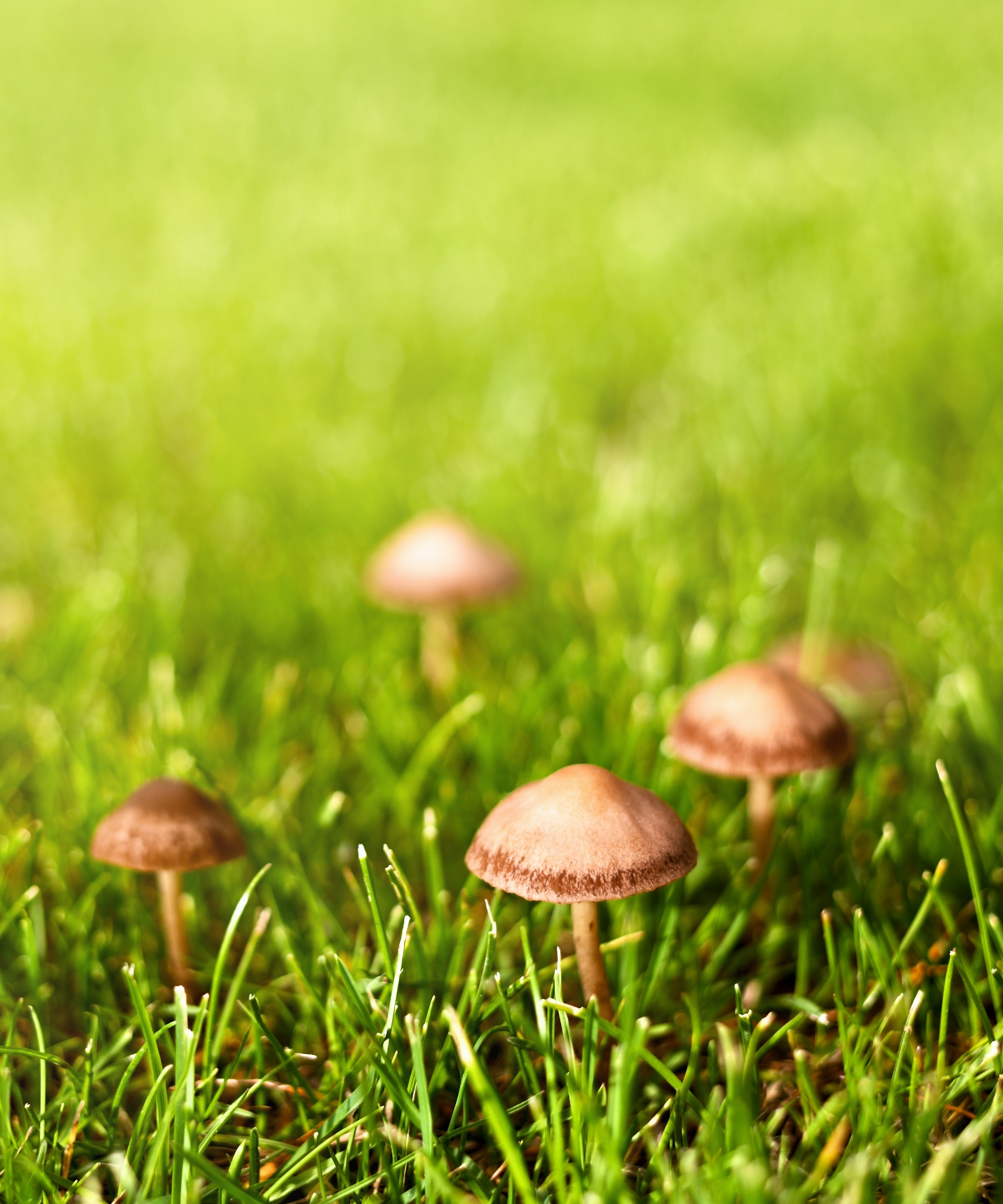Getting rid of mushrooms on the lawn – experts reveal how to get rid of a fungi problem
It doesn't need to be challenging with the right advice – these are the tips to try


Getting rid of mushrooms on the lawn may seem like a mundane task for any gardener. But the process doesn't need to be complicated, and it can leave you with flawless turf that's happily fungi-free.
According to garden expert John Negus, lawn mushrooms thrive by feeding on dead material in the soil. This means the process of getting rid of them begins by tackling the source: their food.
This guide explains the steps you need to take. Along with a good lawn maintenance routine, you'll soon have green and thick grass that's picture-perfect.

John has been a garden journalist for over 50 years and regularly answers readers' questions in Amateur Gardening magazine. He has also written four books and has delivered many talks over the years on horticulture.

Mushrooms commonly crop up in lawns, but there are things you can do to tackle them
How do I stop mushrooms from growing on my lawn? Expert ways to prevent this problem
Get your lawn looking its best again with these simple tips.
1. Remove the mushroom's food source
'All you need to do is remove the food source that the mushrooms are feeding on,' says Jason Vergara, the Founder of the World Mushroom Society. 'In most cases, this will be dead or decaying plant matter.'
The expert explains that if there is no food source for the mushrooms to feed on, they will not be able to grow – so you should clean up any fallen leaves (which can then be used to make leaf mold), tree bark, branches, or other debris from your lawn on a regular basis. Dethatching a lawn can also help with this.

Mushrooms feed on lawn debris
2. Maintain your lawn
Similarly, taking care of your lawn will encourage mushrooms to stay away. This includes watering when necessary, applying fertilizer, and avoiding walking on it during inclement weather. Jason recommends using the best lawn mower to cut your grass frequently.
'Different climates will provide different challenges when it comes to preventing mushrooms,' he says. 'In general, hot and humid climates are more conducive to mushroom growth than cold or dry climates. This is because mushrooms need moisture to grow.'
Design expertise in your inbox – from inspiring decorating ideas and beautiful celebrity homes to practical gardening advice and shopping round-ups.
For this reason, improving drainage in the lawn can help. Aeration is a great way to do this, and will improve the health of your lawn overall. This manual Gardzen aerator from Amazon is perfect for the job. Brush in a layer of lawn sand or topsoil afterward, as John Negus suggests.
3. Invest in a commercial product
While it is always better to approach chemical products with caution, Jason suggests that some are able to assist in getting rid of mushrooms on the lawn.
Fertilizing a lawn with fertilizers containing nitrogen will help break down the decaying matter that the mushrooms are feeding on and at the same time stimulate lawn growth, he says. However, he warns that some commercial fungicides can destroy your soil health if used too liberally. Always check the label and follow instructions carefully.

Mushrooms are more likely to grow in humid environments
FAQs
Is it essential to remove mushrooms?
While it's not absolutely necessary to remove mushrooms that are already growing on your lawn, it is generally a good idea, says Jason Vergara of the World Mushroom Society.
The spores they release spread their growth, he adds. And although the majority are harmless to garden plants, some, including fairy-ring and honey fungi, can cause damage, says John Negus of Amateur Gardening.
'In addition, some types of mushrooms are poisonous if ingested by humans or animals,' says Jason. 'For these reasons, it's usually best to remove them as soon as you see them.'
Can you remove mushrooms by hand?
If you've completed the prevention steps but still come across mushrooms on your lawn, it is possible to remove them by hand. Kyle Tingley, the resident lawn care expert at The Backyard Master, suggests pulling them out at the base and discarding them in your yard waste bin. 'This will prevent the spores from spreading throughout your yard.'
However, do proceed with caution and always wear gloves, as some mushrooms can be extremely toxic.
How should I tackle a ring of mushrooms and dead grass in my lawn?
The rings are likely caused by Marasmius oreades, otherwise known as fairy-ring fungus. Remove the mushrooms as soon as they appear. Then, John Negus of Amateur Gardening magazine suggests digging out the affected dead grass to 3ft deep and 1ft 6in on either side of the ring. Replace this soil with fresh, uncontaminated soil.
'The only problem, apart from it being demanding and expensive, is that its roots may have spread beyond the dead circle,' he continues. An easier alternative that can still be effective is to aerate the dead patch with a garden fork to a depth of 10in. Follow this by watering the area with a diluted detergent, which will remove waterproof resins from the soil particles.
Finally, John advises scarifying the area and then over-seeding it to repair the lawn patch.

Megan is the Head of Celebrity Style News at Homes & Gardens, where she leads the celebrity/ news team. She has a history in interior design, travel, and news journalism, having lived and worked in New York, Paris, and, currently, London. Megan has bylines in Livingetc, The Telegraph, and IRK Magazine, and has interviewed the likes of Drew Barrymore, Ayesha Curry, Michelle Keegan, and Tan France, among others. She lives in a London apartment with her antique typewriter and an eclectic espresso cup collection, and dreams of a Kelly Wearstler-designed home.